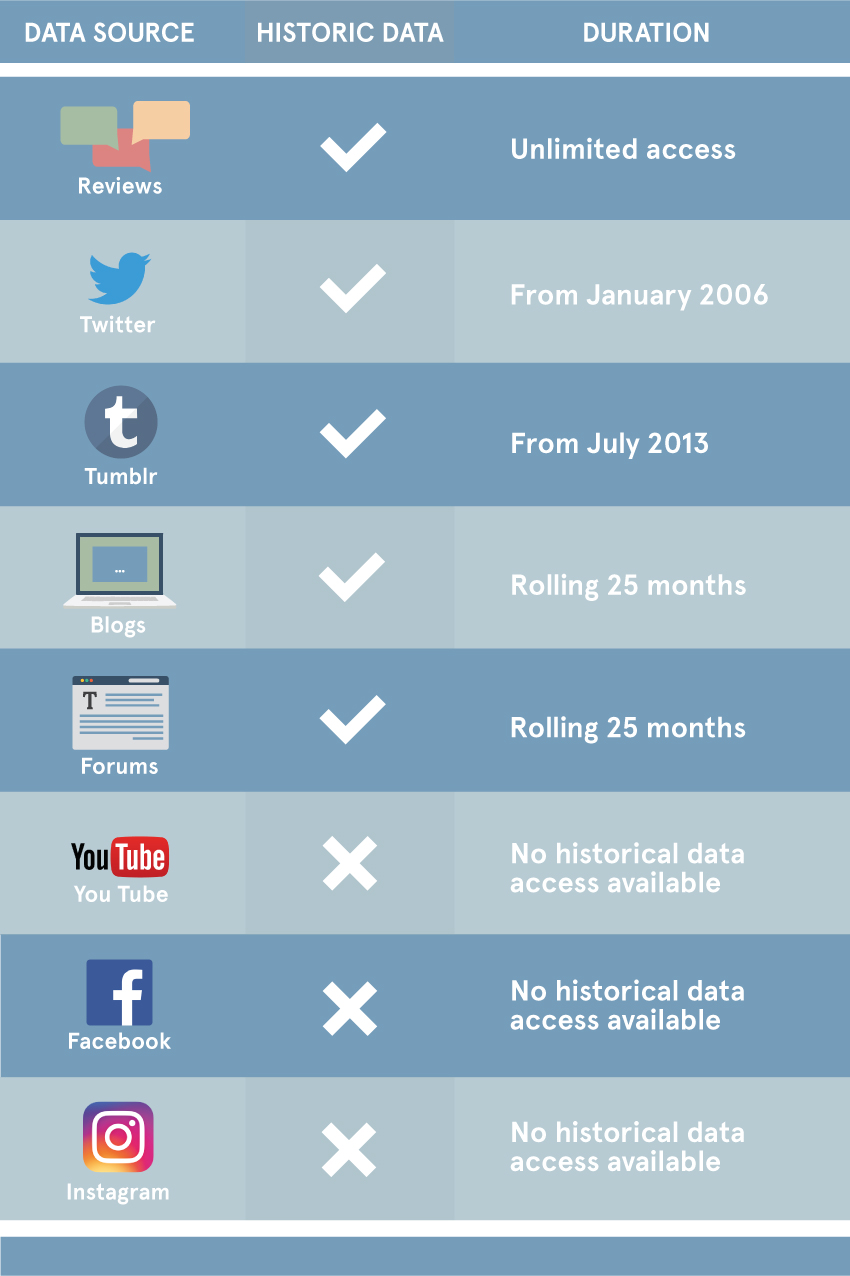Social Q&A: #1 Get to know your data sources in social media research
In this new series, our Head of Account Management Jamie Watson addresses frequently asked questions about audience intelligence platform Pulsar. Whether you’re a frequent Pulsar user or still evaluating a social media research platform for purchase, Jamie’s tips, tricks & useful info hope to highlight what to look out for.
Data sources
In this first post, we'd like to clarify data sources on Pulsar, and what you should know about them before you set up your search. Data sources, simply put, are where the mentions for your search come from.
There is quite a bit of confusion around this topic generally – and that’s completely understandable. Every data source comes with its own set of rules and regulations, that goes for Pulsar as well as for other social media research platforms.
Let’s start with the basics:
What sources can Pulsar collect data from?
- Tumblr
- YouTube
- Vimeo
- Dailymotion
- News
- Forums
- Blogs
- Reviews (e.g. Amazon, Reddit, TripAdvisor)
Note that we can add in certain other sources on request, so it's always good practice to bring this up with the team. Of course we'd also be happy to tell you more about the extent of our coverage, just get in touch: details are at the bottom of this page.
Some sources only give you data from the point you start collecting and hit the ‘go’ button on your search. Others allow you to do a search in the past as well as from the moment you hit go. This difference is one of the key things to understand about data sources, as it will impact the way you set up your search. Here it is in short:
Real-time data
Real-time data are mentions that are collected as they are posted; effectively a live feed of the social web. You can get this from all the available data sources on Pulsar.
Historic data
Historic data are mentions that you are ordering from the past, that are delivered to Pulsar in a batch. The availability depends on the data source, as you can see in the graph below:
'Rolling' means that you can look up to the mentioned amount of months back, and this time frame scoots up with every day.
So how would this distinction affect your search?
Research question
People tend to use social media platforms to show different sides of themselves, giving each source a distinctive type of content. That means that using more data sources is likely to give you a more complete answer to your research question, as all these sources will add a different side to the story you’re trying to get insight into.
Now if you keep the limitations and opportunities in mind each data source offers according to the graph above, it should become easier to think about how you should focus your research question. For example: you can look back in the past with Twitter, but not with Instagram buy jordans cheap online. That's why planning a search around images of dogs playing the trumpet in 2014 might not give you your answers, and it's better to rephrase your search, for example by searching to find text-based posts in the past.
Time and planning
Another way this impacts your research is in time: the decision of whether you run data in real-time or historic is down to the scope of the research. If you want Facebook, Instagram & YouTube, you will need to build in a real-time data collection period, which will prolong your research timeline. This is particularly important if you need to deliver reports to a certain deadline, or if you are managing clients’ expectations if you are in an agency.
How our clients put this knowledge into practice
As mentioned, it’s best to make use of Pulsar’s extensive coverage and utilize all sources: the more sides of the story you get, the more comprehensive your answers will be. But this is not always necessary, and it's all about formulating your research question to help you pick the right data sources. Here's a short list of the ways most of our clients use different data sources:
- Twitter, Tumblr, news, blogs and forums great for trend analysis, quick turnaround projects and pitches using historic data
- Facebook, Instagram and YouTube are best for deeper research with longer lead times
- Facebook is great for getting a truly comprehensive picture of your audience as it can show you their behaviours, passions and affinities
- Instagram and Tumblr, being visually led data sources, are useful if you want to refine your creative and content strategies
If this sounds interesting and you’d like to find out how you can start answering questions, please get in touch: info@pulsarplatform.com. If you're an existing Pulsar client, just contact us on account.team@pulsarplatform.com. Of course you're always welcome to give us a good old fashioned phone call on +44 (0)20 7874 6577



